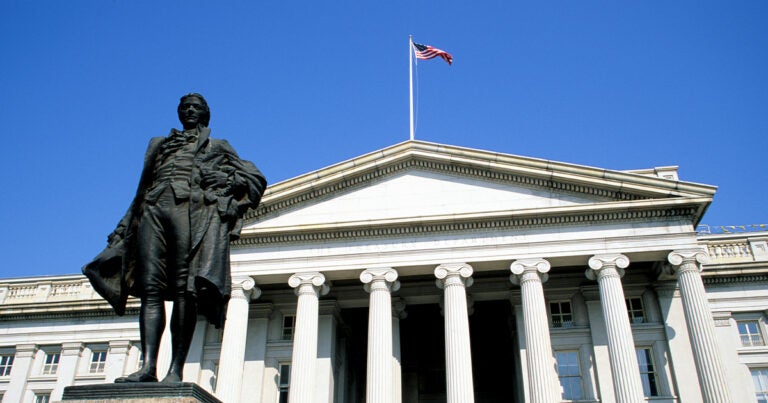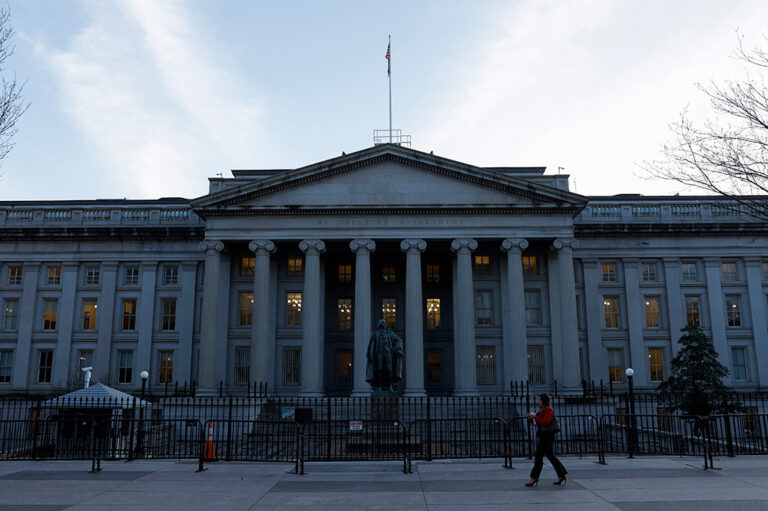The Government Accountability Office’s (GAO’s) recent report on the nation’s fiscal health echoes analysis from the Congressional Budget Office (CBO) in warning that federal debt is on an unsustainable path. The report outlines the drivers of the country’s fiscal trajectory and calls for Congress to develop a plan to address that outlook.
Under GAO’s projections, debt held by the public would more than double over the next 30 years — rising from 102 percent of gross domestic product (GDP) at the end of fiscal year 2025 to 253 percent in 2055. Those projections assume that current policies remain in place over the next decade (for example, expiring tax provisions would be continued) and incorporate some simplifying assumptions about the relationships of various budgetary categories relative to the size of the economy over the following two decades.
Although GAO’s projections are based on estimates from CBO that were issued last year, their findings are similar to recent reporting from CBO that focuses on the structural factors driving an imbalance between spending and revenues:
- Growth in Spending. GAO’s report highlights that federal spending in the future will be driven by increases in healthcare programs, Social Security, and net interest. Each of those spending categories are projected to grow faster than the economy over the next 30 years. By 2054, GAO estimates that federal spending on healthcare and Social Security combined will equal 14.7 percent of GDP, up from 10.7 percent in 2024. Much of that increase is associated with the aging population and the rapidly rising cost of healthcare. Net interest will grow substantially in the long term, reaching a historical high of 3.2 percent of GDP in 2025 and nearly 9.0 percent of GDP by 2054 — becoming the largest “program” in the federal budget within the next 30 years as a result of mounting debt and higher interest rates.
- Inadequate Revenues. For projections through 2034, GAO adjusts CBO’s baseline values to reflect the expectation that current tax provisions slated to expire will be extended, thereby reducing revenues and widening the deficit. Such provisions include the individual income tax provisions that were part of the Tax Cuts and Jobs Act (TCJA) and are set to expire at the end of December 2025. With those assumptions, GAO finds that over the 2025–2034 period revenues would average 16.5 percent of GDP. In 2035, GAO makes a simplifying assumption that revenues will remain constant at 17.4 percent of GDP their 30-year historical average, through 2098.
In the report, GAO also reiterates their sentiment that Congress should create an effective fiscal plan to address the unsustainable fiscal trajectory. The report highlights the creation of a fiscal commission as one option to address the fiscal outlook, noting that six pieces of legislation were introduced in Congress in 2023 or 2024 to do so. GAO believes that a successful commission would:
- Establish fiscal rules and targets to address the imbalance between spending and revenues.
- Consider replacing the debt limit.
- Address financing gaps for Social Security and Medicare.
- Pursue other opportunities to improve fiscal responsibility.
GAO’s findings add to a chorus of nonpartisan evidence and analysis showing that action is needed to improve our fiscal outlook so that the country can meet future challenges, invest in the next generation, and build a strong and inclusive economy.
Image credit: Government Accountability Office
Further Reading
The Fed Reduced the Short-Term Rate Again, but Interest Costs Remain High
High interest rates on U.S. Treasury securities increase the federal government’s borrowing costs.
What Types of Securities Does the Treasury Issue?
Let’s take a closer look at a few key characteristics of Treasury borrowing that can affect its budgetary cost.
Quarterly Treasury Refunding Statement: Borrowing Up Year Over Year
Key highlights from the most recent Quarterly Refunding include an increase in anticipated borrowing of $158 billion compared to the same period in the previous year.


